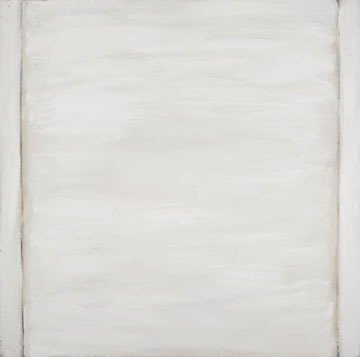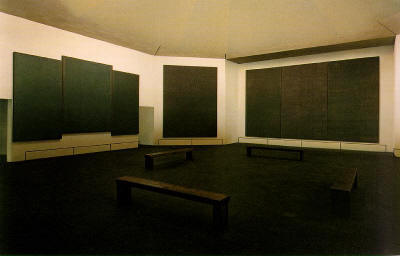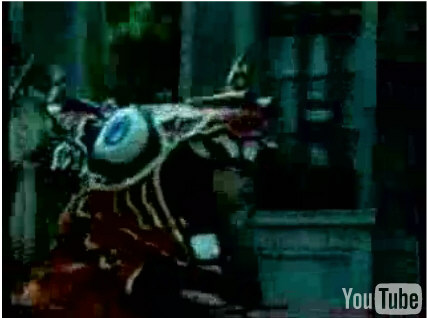 |
||
| home | features | exhibitions | interviews | profiles | webprojects | gazetteer | links | archive | forum | ||
|
|
||
|
Spirituality and art: with thanks to ‘The Wickerman’ and John Halkes. Rupert White
Ask most people if they’re spiritual: they’ll say ‘yes’, but ask them if they’re religious and they’ll answer ‘no’. I’m like ‘most people’ in this regard, but like many who went to church as a kid but then stopped, things frequently happen that cause me to reconsider my relationship with religion. This weekend two such things happened. Firstly I met John Halkes in a gallery in Truro where he was giving a lecture on the painter Michael Finn (picture right). I had heard of John as the curator of the Newlyn Art Gallery between 1975 and 1990: and as a man who subsequently was ordained and worked as a vicar in Betjeman country (North Cornwall). He had a close relationship with the late Michael Finn, and so the talk had a personal dimension and the kind of poignancy and depth that most talks about art lack. John himself, an extremely charming and engaging man, suggested that the simplicity and mystery of Michael Finn’s paintings parallels the simplicity of the Catholic mass, and that looking at them properly is like praying. I think by this he was referring to the sense that one is contemplating, and therefore opening up the mind, to forces that are mystical, huge and unknowable.
The sixties were a time when religion and spirituality were ‘hip’ in as much as they were associated with youthful rebellion, and they could also be used overtly as inspiration and premise for making art. It is a sign of our times that most contemporary artists do not attempt to use them any more: not at least publicly. This would seem one manifestation of the way in which the debate around art has imploded, and lost both its direction and its idealism.
Perhaps contemporary artists recognise the hypocrisy of deeply ‘spiritual’
art-works going on to sell for millions: art-works that end up as the
ultimate commodity. It is as if they prove that, in our times, consumerism
itself has been elevated to the status of a religion. It was this aspect of the Michael
Finn exhibition that was, arguably, problematic: after all John's talk was
being hosted by a commercial gallery off the high-street in Truro. It is a
paradox that inevitably affects any idealistic artist who seeks to sell
their work in a conventional way. Even the Rothko chapel (picture above)
can be seen as caught up in a web of market forces having been commissioned by
ultra-rich art-collectors. In the end, despite advertising itself as a
chapel for all religions, it can be viewed as a monument to
mankind's vanity. The other thing that happened this weekend is that I found a film on YouTube. About 10 minutes long, it was edited from 16mm B&W footage of Helston Flora Day and video footage shot in the 80s. (see Flora, Faddy, Furry Dance Day - picture right). It was interspliced with celtic, pagan and druidic imagery, and was very evocative of my personal favourite film: ‘The Wicker Man’, shot in 1973. The important thing though is that the YouTube film, which I’d recommend watching, is made up of footage of a real event – indeed one that occurs every year just up the road. ‘The Wickerman’ (picture below) is to my mind the culmination of the occult revival that happened in the late 60s, which is still very much part of popular culture now, particularly as it manifested itself in forms of neo-paganism. The film itself is a fantastic, if caricatured, depiction of a conflict for supremacy between old and new religions. Throughout history it has been new revealed religions (Christianity and Islam) that have won this battle, which why in 'The Wickerman' it is nice to see the old religion come out on top – even if the ending is barbarous. I think its power comes from the fact that it mimics the same struggle that went on, and indeed continues, in my own mind.
The struggle in my own mind was won by neo-paganism, because I was convinced that this would help me both find my place, spiritually, and also help me make art that was religious in a good way: in a way that was more permissive and forgiving, and in a way that could make it a force for change. These days I sometimes joke with my family that I am a druid, but I’m not; it is a joke, and in fact don’t have a name for any of the religious or spiritual views that I have now. None of them, personally, have the same force or coherence now that they used to anyway...
What were/are your influences as an artist? What is the role of religion in contemporary art? Is there a relationship between eco-art and neo-paganism? Why not respond on the forum or contribute your own piece of writing to the site?
|
||



 I read quite a few books on the occult and on comparative religion when I
was at college, and decided that I couldn’t be a Christian because I
believed whilst
good things have come of Christianity - on balance – the bad things
outweigh them. I convinced myself that, ever since the Romans conquered
the druidic people of the British Isles, Christianity had been used by the
state as an oppressive force, restricting individuality, engendering guilt
and, as Durkheim wrote, creating a work ethic that served only to feed
capitalism.
I read quite a few books on the occult and on comparative religion when I
was at college, and decided that I couldn’t be a Christian because I
believed whilst
good things have come of Christianity - on balance – the bad things
outweigh them. I convinced myself that, ever since the Romans conquered
the druidic people of the British Isles, Christianity had been used by the
state as an oppressive force, restricting individuality, engendering guilt
and, as Durkheim wrote, creating a work ethic that served only to feed
capitalism.